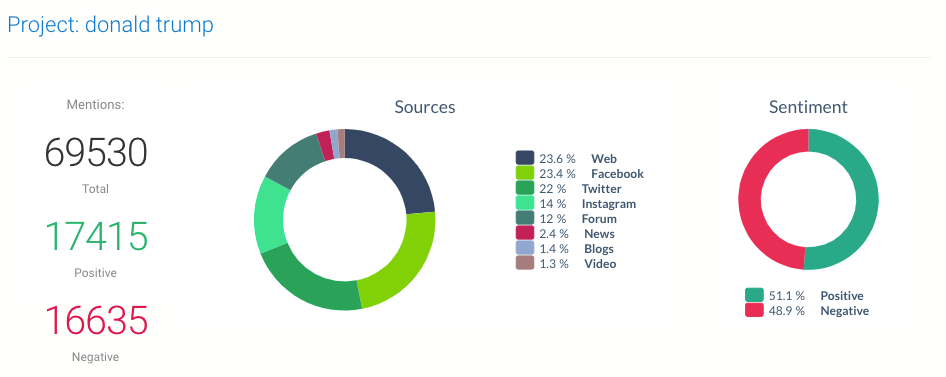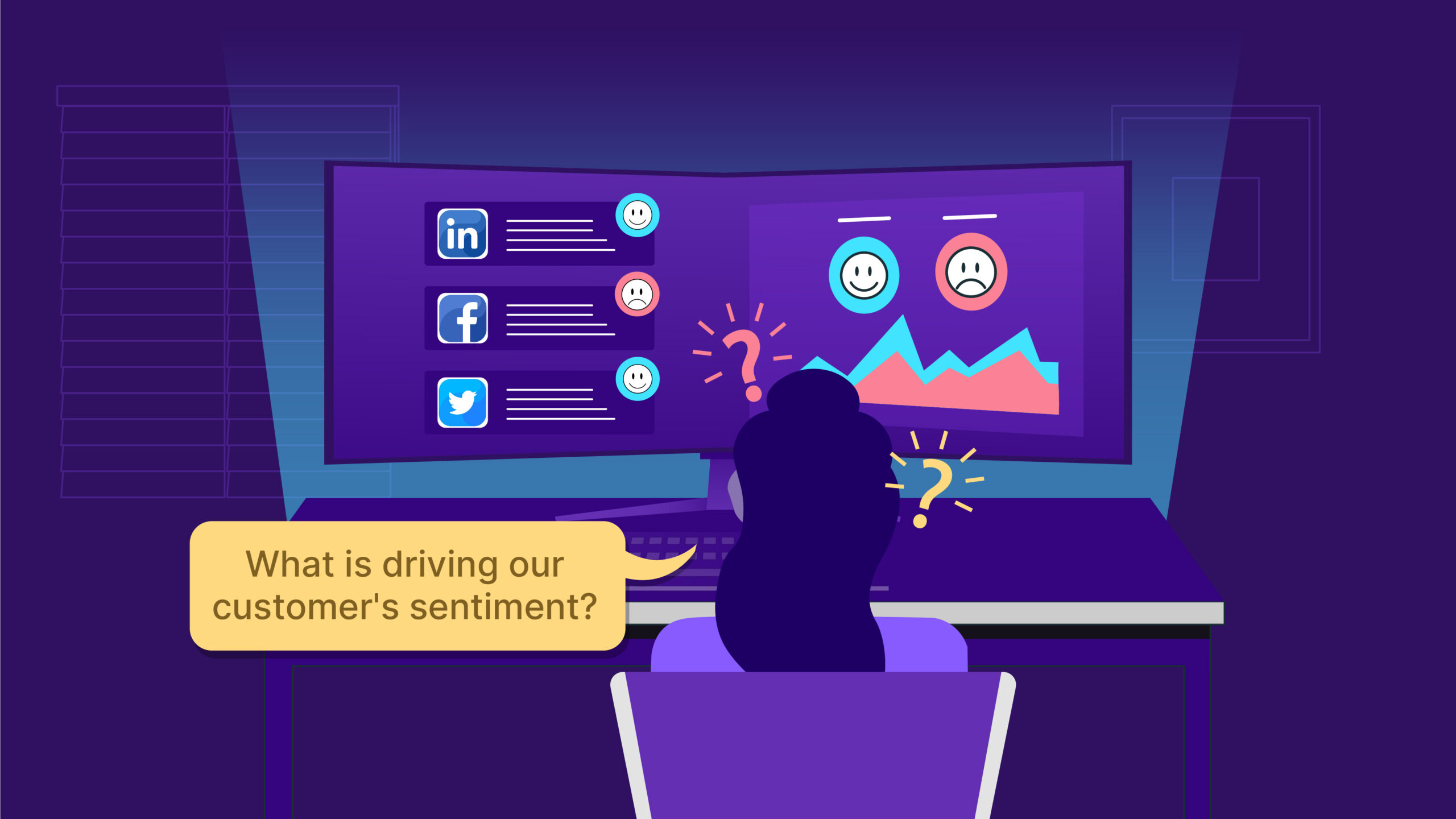In today’s digital age, where social media platforms and online review sites have become a breeding ground for customer opinions and feedback, sentiment analysis and social listening have emerged as crucial tools for businesses. By analyzing and understanding the sentiments expressed by customers, companies can gain valuable insights into their products, services, and overall brand perception. In this article, we will delve into the concept of sentiment analysis social listening, exploring their significance and benefits for businesses.
The Importance of Sentiment Analysis Social Listening

Sentiment analysis holds immense importance for businesses across various industries. It provides companies with valuable insights into how customers perceive their brands, products, and services. By analyzing customer sentiment, businesses can:
- Gain a deeper understanding of customer needs and preferences.
- Identify areas of improvement and address customer concerns promptly.
- Measure the effectiveness of marketing campaigns and product launches.
- Monitor brand reputation and track public opinion.
- Stay ahead of competitors by identifying emerging trends and market opportunities.
Understanding Social Listening
Social listening is the practice of monitoring and analyzing online conversations and discussions to gather insights and understand public sentiment. It involves tracking mentions, comments, and reviews on social media platforms, forums, blogs, and review sites. Social listening enables businesses to tap into the collective voice of their customers, helping them identify trends, sentiments, and emerging issues.
How Sentiment Analysis Social Listening Work Together
Sentiment analysis and social listening go hand in hand to provide a comprehensive understanding of customer sentiment. Social listening helps businesses collect a vast amount of data from various sources, while sentiment analysis helps process and analyze that data. By combining the two, companies can extract meaningful insights and make data-driven decisions based on customer sentiments.
Benefits of Sentiment Analysis and Social Listening for Businesses
- Customer Insights: Social media sentiment analysis enable businesses to gain valuable insights into customer opinions, preferences, and pain points. This information can guide product development, marketing strategies, and customer service improvements.
- Brand Reputation Management: By monitoring online conversations, businesses can actively manage their brand reputation. They can address negative sentiment promptly, resolve customer issues, and enhance overall brand perception.
- Competitive Advantage: Analyzing customer sentiment allows businesses to identify gaps in the market, stay ahead of competitors, and deliver products and services that align with customer expectations.
- Crisis Management: Sentiment analysis and social listening are essential during times of crisis. By monitoring public sentiment, businesses can identify potential issues, take proactive measures, and minimize reputational damage.
- Improved Customer Experience: Understanding customer sentiment helps businesses enhance their products and services, tailoring them to meet customer needs effectively. This, in turn, leads to improved customer satisfaction and loyalty.
Implementing Sentiment Analysis and Social Media Listening Strategies
To effectively implement sentiment analysis and social listening strategies, businesses should consider the following steps:
- Define Objectives: Clearly define the goals and objectives of sentiment analysis and social listening initiatives. Determine what insights you aim to gain and how they align with your overall business strategy.
- Choose Relevant Data Sources: Identify the social media platforms, review sites, and online communities that are most relevant to your industry and target audience. Focus on platforms where your customers are most likely to share their opinions.
- Select Suitable Tools: Invest in reliable sentiment analysis and social listening tools that can handle large volumes of data and provide accurate insights. Consider tools that offer real-time monitoring, sentiment classification, and customizable reporting features.
- Establish Data Collection Mechanisms: Set up systems to collect and store data from various sources. This may involve using APIs, web scraping, or partnering with data providers.
- Analyze and Interpret Data: Apply sentiment analysis techniques to the collected data to extract meaningful insights. Interpret the results to gain a comprehensive understanding of customer sentiment and preferences.
- Take Action: Translate the insights gained from sentiment analysis and social listening into actionable strategies. Use the data to make informed decisions that enhance customer experience, improve products, and address any issues identified.
Best Practices for Effective Social Media Sentiment Analysis

To ensure the effectiveness of social media sentiment analysis efforts, businesses should adhere to the following best practices:
- Use a Combination of Tools and Human Expertise: While automated tools are essential for processing large volumes of data, human expertise is crucial for contextual understanding and accurate interpretation of sentiments.
- Monitor Relevant Metrics: Apart from sentiment analysis, track other relevant metrics such as engagement levels, reach, and customer satisfaction scores. This provides a holistic view of customer sentiment and enables deeper insights.
- Stay Engaged and Respond: Actively engage with customers on social media platforms and respond promptly to their feedback. This demonstrates that you value their opinions and are committed to addressing their concerns.
- Continuously Evolve: Social media sentiment analysis is not a one-time activity. Continuously monitor customer sentiment, adapt strategies based on changing trends, and refine your approach as needed.
Overcoming Challenges in Social Media Sentiment Analytics
While social media sentiment analytics offers numerous benefits, they come with their own set of challenges. Some common challenges include:
- Language Ambiguity: Language is complex and often contains sarcasm, irony, or cultural nuances that can be challenging to interpret accurately using automated tools.
- Data Overload: With the vast amount of data available, businesses may struggle to process and analyze it effectively. Prioritizing and filtering the data becomes crucial to extract meaningful insights.
- Data Quality and Noise: Not all online conversations and comments may be relevant or reliable. Differentiating between genuine customer feedback and noise is essential to ensure accurate analysis.
- Privacy and Ethical Concerns: Collecting and analyzing customer data raise privacy and ethical considerations. Businesses must adhere to data protection regulations and ensure responsible handling of customer information.
Tools and Technologies for Social Listening and Sentiment Analysis
Several tools and technologies facilitate social media sentiment analysis, including:
- Natural Language Processing (NLP) frameworks like NLTK, SpaCy, and Stanford NLP.
- Social media monitoring tools such as Aim Insights, Brandwatch, and Sprout Social.
- Text analytics platforms like IBM Watson, Google Cloud Natural Language API, and Lexalytics.
- Customer relationship management (CRM) systems that integrate sentiment analysis features.
Ethical Considerations in Sentiment Analysis and Social Media Listening
As social media sentiment analysis involve collecting and analyzing customer data, businesses must prioritize ethical considerations. Key ethical principles include:
- Transparency: Inform customers about data collection and how their information will be used.
- Anonymity: Protect customer privacy by anonymizing data during analysis and reporting.
- Consent: Obtain explicit consent from customers before collecting and using their data for sentiment analysis and social listening purposes.
- Data Security: Ensure robust data security measures to protect customer information from unauthorized access.
Future Trends
The field of social media sentiment analysis is rapidly evolving. As technology advances, we can expect improvements in accuracy, context-aware sentiment analysis, and real-time monitoring. Additionally, the integration of sentiment analysis with other technologies like artificial intelligence and machine learning will further enhance the capabilities of these tools.
Conclusion
Social media sentiment analysis has revolutionized the way businesses understand and respond to customer sentiments. By leveraging these techniques, companies can gain valuable insights, drive customer-centric strategies, and enhance their overall brand reputation. With the continuous evolution of tools and technologies, sentiment analysis and social listening are poised to become indispensable tools for businesses aiming to thrive in the ever-changing digital landscape.
Are you ready to unlock the power of sentiment analysis and social listening for your business? Request a demo from Aim Technologies today and discover how our cutting-edge solutions can help you harness the voice of your customers.
FAQs
What is the difference between sentiment analysis and social listening?
- Sentiment analysis focuses on analyzing the emotions and attitudes expressed in text, while social listening involves monitoring and analyzing online conversations and discussions to gather insights and understand public sentiment.
How can sentiment analysis benefit businesses?
- Sentiment analysis provides businesses with valuable insights into customer perceptions, enabling them to understand customer needs, measure marketing effectiveness, and manage brand reputation.
Are there any limitations to sentiment analysis?
- Yes, sentiment analysis may face challenges in accurately interpreting language ambiguity, sarcasm, irony, and cultural nuances. Human expertise is often required to achieve accurate results.
Can sentiment analysis be applied to non-textual data?
- While sentiment analysis is primarily applied to text data, advancements in technology are enabling the analysis of other data types, such as images, videos, and audio.
Is social listening only relevant to large corporations?
- No, social listening is beneficial for businesses of all sizes. It allows companies to understand their customers, track industry trends, and make informed decisions based on customer sentiment.


